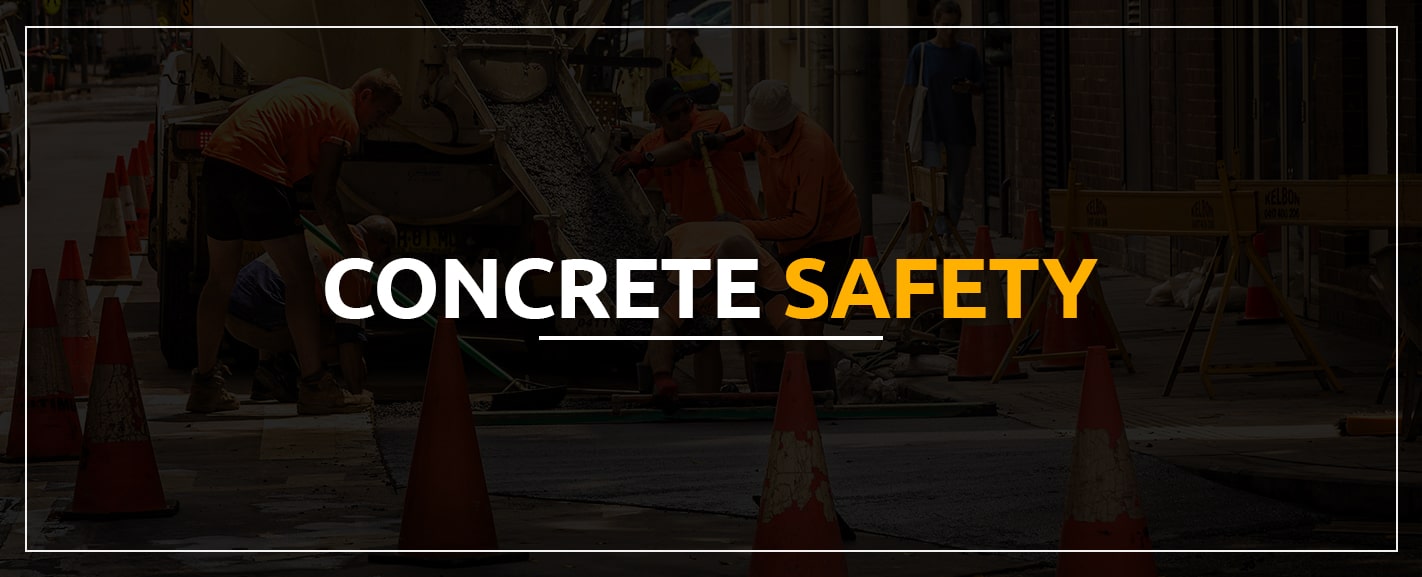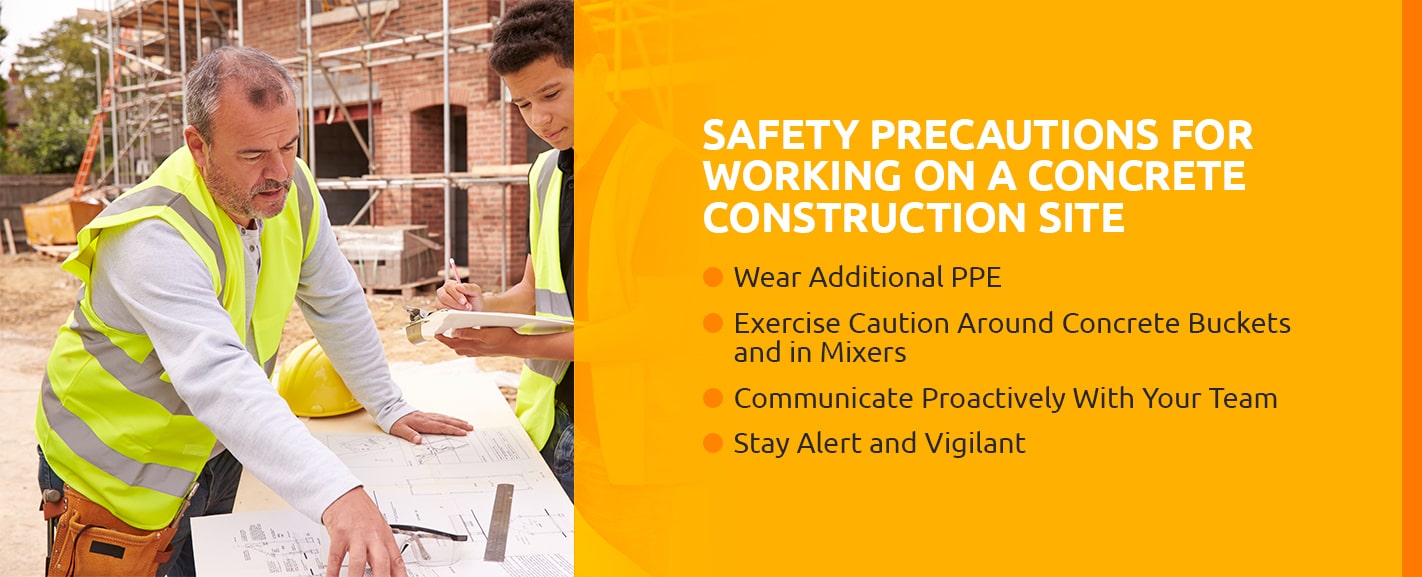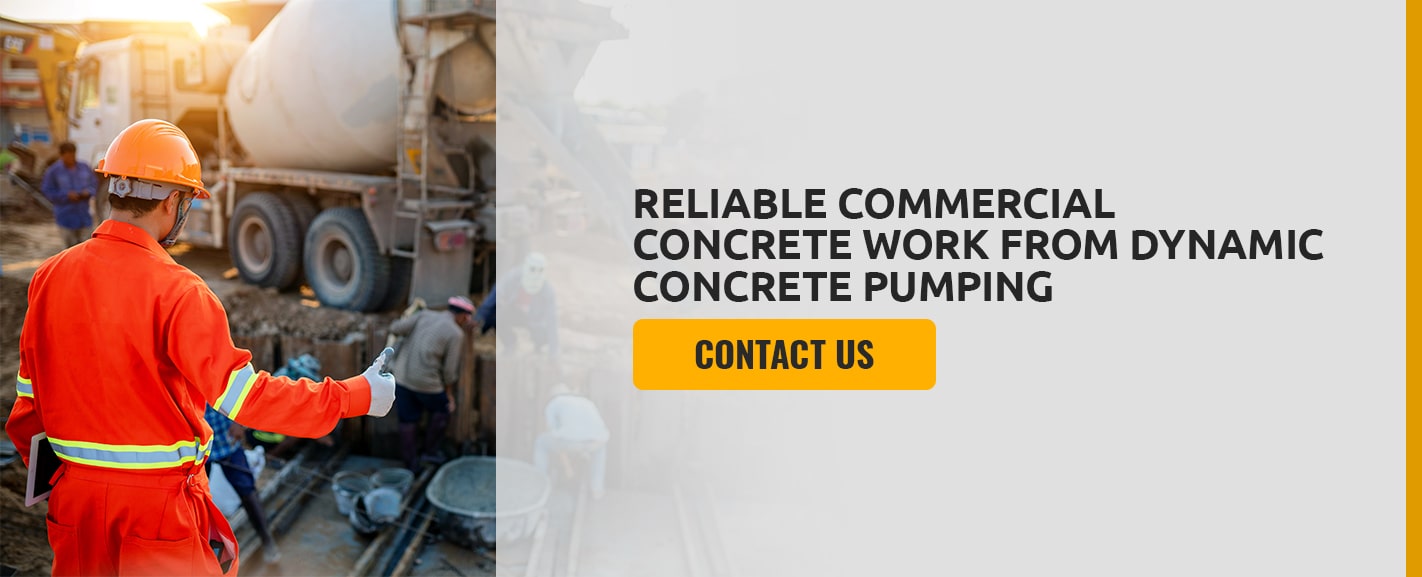
Concrete Safety
Posted By:Dynamic Concrete Pumping , Date: Oct 29, 2021

When you’re working with wet or dry concrete, safety is paramount. Effective concrete safety precautions prevent injuries like falls, cuts, abrasions and burns, keeping workers healthy and productive. Below are a few concrete safety tips you can use to protect yourself and others whenever you work with concrete.
Safety Precautions for Working With Concrete
When you’re handling concrete directly by mixing and pouring it, you’ll need to take a few precautions to keep everyone safe on the job.
1. Wear the Appropriate Personal Protective Equipment (PPE)
What PPE is required for workers applying cement and other concrete formations? PPE for concrete work generally includes gear to protect sensitive and easily injured areas of the body, including the eyes, skin, lungs and back. Be sure to wear these types of PPE when you work with concrete:
- Boots and gloves: Boots and gloves prevent the chemicals in the cement used in concrete from causing skin irritation or chemical burns. Alkali-resistant boots and gloves are ideal for resisting these caustic chemicals. They can also protect your hands and feet from nicks and abrasions caused by flying debris.
- Safety goggles: Safety goggles prevent eye irritation from chemicals and concrete dust. For the best protection, wear shatterproof goggles that can resist heavy impacts.
- Face protection: Face protection such as a P-95, N-95 or R-95 mask helps prevent lung problems caused by concrete dust inhalation. Silicosis, for instance, can occur when workers breathe in significant amounts of crystalline silica dust over several years. Silica occurs naturally in many types of rock and sand and is often present in the aggregate used in concrete. Breathing in concrete dust can also cause nose and throat irritation, chronic bronchitis and occupational asthma. Using a face mask or respirator helps keep the lungs clear and healthy.
- Full-length pants and shirts: You’ll want your body fully covered to reduce the risk of skin irritation and concrete burns. Full-length clothing helps protect your skin from chemicals.
2. Use the Proper Tools
To reduce the amount of respirable concrete dust in the air, use tools designed specifically for dusty work environments.
Whenever possible, use exhaust-ventilated tools, such as hand-held cutting saws or concrete hammer drills, that can remove dust at the source. You can also employ tools fitted with a water supply to help tamp down dust and reduce inhalation.
Be sure to clean tools properly and replace them when they’ve worn out. Doing so makes them more efficient, reduces the risk of contamination or corrosion and lowers the chance of injury.
3. Employ the Proper Techniques
If you can’t use specific tools to control concrete dust, you can use larger-scale techniques. For example, if you can’t adequately ventilate dust at the source, you will need to ventilate the larger workspace to prevent dust inhalation.
You should also use proper lifting and handling techniques to avoid injury. Bending over and lifting heavy concrete slabs can hurt your back. Be sure to squat and lift with your legs to keep your spine and back muscles in the right positions, and never twist your back while you are carrying a heavy load. Try to get a partner to lift a heavy load with you or use mechanical assistance.
4. Have Washing Stations Available
Any location where concrete mixing or pouring occurs should have eyewash stations available. This way, workers can rinse their eyes out immediately if they get concrete dust or debris in them.
The site should also have general washing-up stations available. These stations should include clean water, clean towels and non-alkaline soap. Washing immediately after exposure helps prevent skin irritation and burns.
contact us for concrete pouring services
Safety Precautions for Working on a Concrete Construction Site
A construction job site presents several extra hazards. You will need to take all the standard precautions that apply when working with concrete. Additionally, you’ll need to take a few additional safety measures to protect your head, feet and ears. Falling objects and loud noises come with the territory in construction work, and being proactive about safety in this environment helps preserve your hearing and prevent injuries.
Let’s look at a few additional precautions that apply to handling concrete on a construction job site.
1. Wear Additional PPE
When you’re working with concrete, you’ll probably already be wearing essential PPE like gloves, goggles and a face mask. On a construction site, consider adding additional pieces of equipment like these:
- A hard hat or helmet
- Steel-toed boots
- Earplugs
Wearing this gear keeps you from sustaining injuries from an accident or repeated loud noise. If a heavy beam falls from above, a hard hat helps protect you from a severe head injury. If you drop a heavy drum or a massive concrete slab, steel-toed boots keep you from smashing your feet and toes. Earplugs protect your hearing from repeated, high-decibel noise.
2. Exercise Caution Around Concrete Buckets and in Mixers
Workers should not ride in concrete buckets or stand underneath buckets being raised or lowered. Teams should also route buckets in a way that exposes the smallest number of people to hazards. Following these best practices protects workers from potentially severe crushing injuries on construction sites.
You’ll also want to use extra caution when you work in or near concrete mixers. Spending too much time cleaning the enclosed mixer on a hot day can lead to heatstroke, and workers who get caught in mixers when they turn on can get hurt or become smothered in wet concrete. Be alert and aware when around mixers to avoid these potential hazards.
3. Communicate Proactively With Your Team
Insufficient communication is one common way for accidents and injuries to occur on a construction site. If you need to pour or move concrete, be sure to clear people from the area first. If you need to perform work activities that could injure nearby workers or generate substantial volumes of dust, let your coworkers know so they can step away.
Construction sites should also communicate clearly about the hazards of working with concrete. They should post notices of any hazards workers will encounter on the job. They should also maintain safety data sheets (SDSs) that all employees can access and retain clear labeling on any hazardous materials.
4. Stay Alert and Vigilant
The construction site is no place for drowsing off or getting distracted. A momentary lapse in concentration can be enough to cause a serious accident.
Even during a long, challenging workday, try to remain focused on the job at hand. Refrain from getting drawn into conversation while you work with hazardous machinery, and be sure to take your breaks in a safe area, away from accumulated dust.
Do remember to take your allotted breaks, even on a tight schedule. Giving your mind and body a few minutes to recharge is one of the best ways to stay alert and focused.
Reliable Commercial Concrete Work From Dynamic Concrete Pumping
When you need professional, dependable concrete work, make Dynamic Concrete Pumping your trusted partner. With more than 40 years of experience, we are industry leaders in the concrete business, continually making upgrades to our fleet to ensure superior service.
We offer a wide variety of professional concrete services, including pumping, placing and finishing, Soff-Cutting and grinding and polishing. We are also experts in superflat floors and maintain a fleet of top-quality equipment, including concrete pumps, finishing equipment, laser screeds and Bobcat placers, to help you get the finished concrete surfaces you need.
Browse our project gallery to see some of our work. Feel free to contact us to learn more about how we can help with your next project.



